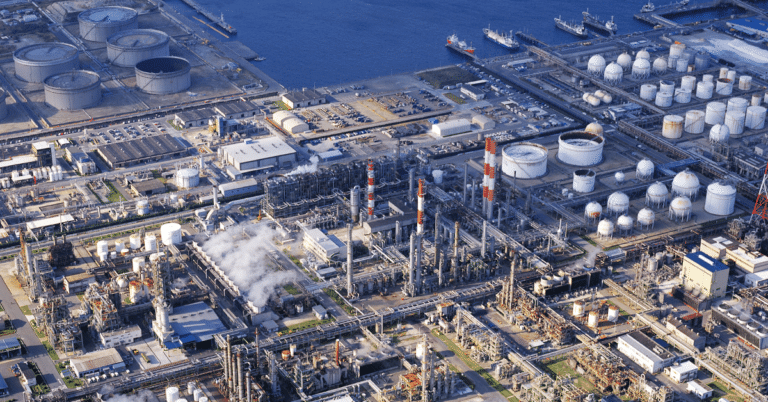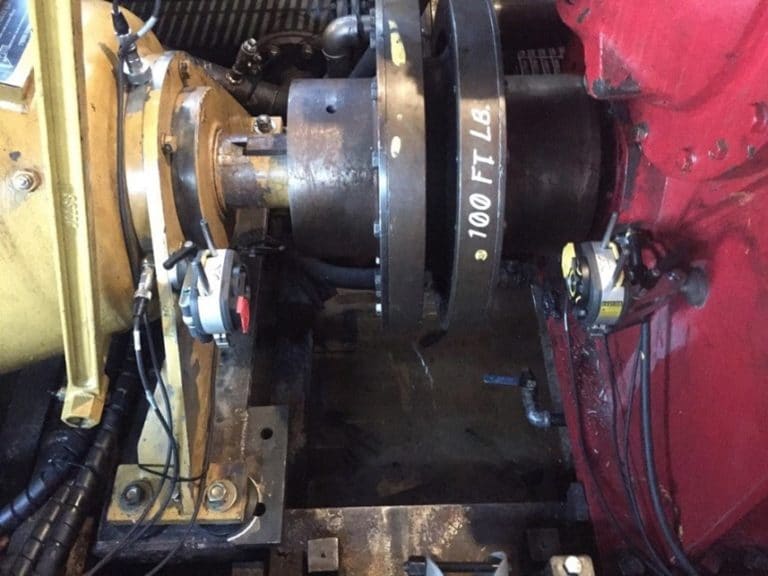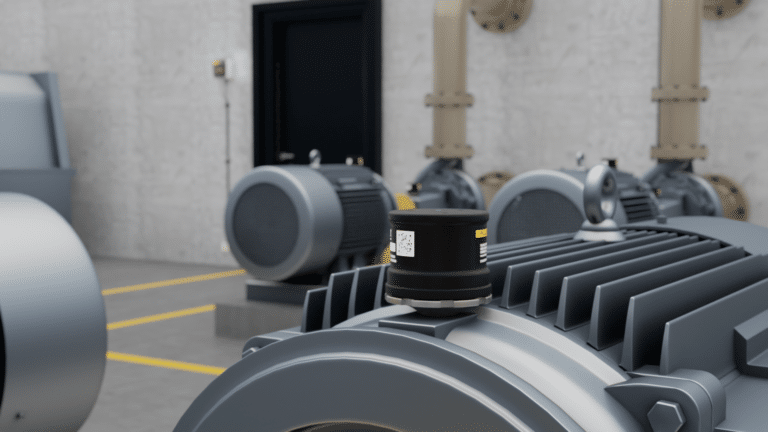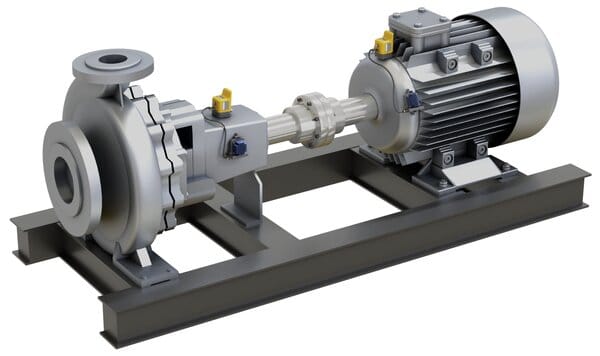Industry 4.0 and the Industrial Internet of Things (IIoT) have dominated conversations about the future of manufacturing. The following glossary explains the meanings behind the biggest buzzwords in the industry.
Let’s start with the two most fundamental terms: Industry 4.0 and the Industrial Internet of Things (IIoT). While the two terms are often used interchangeable to refer to the latest advancements in industrial technology, they do have distinct meanings explained below:
Industry 4.0
Industry 4.0 is the current industrial revolution that focuses on interconnected, automated solutions augmented by real-time data and machine learning. The first three industrial revolutions were 1) the use of water or steam in manufacturing in the late 1700s, 2) the rise of steel and electricity in manufacturing during the late 1800s, and 3) the shift to digital manufacturing from analog technologies.
Industrial Internet of Things (IIoT)
The Internet of Things (IoT) term used to describe the network of physical “things” (for example, digital sensors) that are connected to one another via the internet and are able to transmit and receive data. The Industrial Internet of Things (IIoT) specifically refers to industrial applications of IoT. Leveraging IIoT technologies in manufacturing constitutes the Industry 4.0 revolution.
The remaining terms in our IIoT glossary are listed in alphabetical order:
Artificial Intelligence (AI)
Artificial Intelligence refers to a computer’s ability to perform activities that typically require human intelligence. A machine with artificial intelligence learns from experiences and makes decisions based on data without direct instruction.
Learn more: Industrial AI: Overview, History, and Applications
Augmented Reality (AR)
Augmented Reality refers to an interactive experience that blends together the virtual world and the real world. For example, visuals of a product or component can be overlaid onto the real world via a mobile phone or tablet, enabling users to visualize a virtual object in a real-world space.
Autonomous
Autonomous refers to a machine that 1) has the ability to self-govern or undertake actions without external control and 2) can respond independently to new information. One example is autonomous mobile robots (AMRs), which navigate without an operator, intelligently choosing the best path and avoiding obstacles.
Automated
An automated machine is a machine that has been preprogrammed for a task, such as automated work order creation. While automated processes do not require outside control to complete the tasks for which they are programmed, automated processes do not have the ability to respond independently.
Big Data
Large data sets that are too large to be handled manually. Big Data must be analyzed by a computer, revealing patterns, associations between groups, or overall trends. Big Data also comes into systems in increasingly greater complexity, variety, volume, and velocity — and exponential increase over time.
Computerized Maintenance Management System (CMMS) Software
CMMS software, which can be either cloud-based or on-premise, is designed to enhance the efficiency and effectiveness of maintenance activities, such as planning, scheduling, and monitoring of work orders and maintenance needs. A CMMS can also serve as a centralized location for industrial data.
Learn more: What is a CMMS?
Condition Monitoring (CM)
The process of monitoring various conditions associated with machine health, including vibration and temperature. Condition monitoring lets maintenance teams quickly identify when conditions exceed set thresholds for normal operation and resolve issues before failure occurs.
Learn more: Condition Monitoring Solutions
Connectivity
The ability of a device or system to connect to other systems, applications, or programs via the internet. Connectivity is the backbone of all IoT solutions.
Learn more: Accelerating your Reliability Journey
Cloud
Software, services, or systems that are stored, managed, and accessed on demand via the internet.
Learn more: What You Need to Know About Web-Based Maintenance Management
Cybersecurity
Protection against unauthorized entry or use of electronic data or systems using technologies, processes and controls, networks, programs, devices, data, and other IoT solutions. The goal is to reduce the risk of cyberattacks.
Learn more: Managing Cybersecurity Risk in Maintenance and Reliability
Digital Twin
A digital twin is an asset that is represented virtually in a software program just as it’s used in your facility. Its function, parts, diagrams and photos, all maintenance logs, and other data are tied to this digital twin so that maintenance technicians can easily access information from any location.
Digitization, also known as Digitalization
Converting data into digital formats that can be used by computers; this can be text, pictures, audio, schematics, or any hard-copy item. Documents and other information that amplify the functionality of virtualized machines, or “digital twins.”
Learn more: Manufacturing Industry is Primed to Digitalize
Edge Computing
Deployment of storage, resources, or systems near data sources decreasing the need for off-site or remote data processing. This means the system that processes data from the source is in close proximity to the source. One example is autonomous vehicles, where data from onboard sensors are processed within the vehicle near the sensors themselves, rather than sending sensor data to a remote processing unit and returning it to the vehicle.
Learn more: Sage Advice from an Industry Veteran About Transitioning to Industry 4.0
Enterprise Asset Management (EAM)
The optimal lifecycle management of the physical assets of an organization. It covers subjects including the design, construction, commissioning, operations, maintenance, and decommissioning/replacement of equipment and facilities. Enterprise asset management is an asset lifecycle strategy. Computerized maintenance management system (CMMS) software is a tool that centralizes and optimizes the information integral to EAM.
Learn more: What is Enterprise Asset Management?
Fleet Management Software
Any centralized program, on-premise or in the cloud, used to organize, manage, maintain, and coordinate work vehicles.
Gateway
A software or hardware solution that connects data from multiple sources, usually connecting to a centralized repository. For example, Fluke 3563 Vibration Analysis Sensors and Fluke 3562 Vibration Screening Sensors use gateways to send data to LIVE-Asset Portal software.
Machine Learning
A method of data analysis that automates analytical model building. It is a branch of artificial intelligence based on the idea that systems can learn from data, identify patterns, and make decisions with minimal human intervention.
Learn more: Your Plant is More Prepared for Machine Learning than You Realize
Maintenance Strategy
Any maintenance plan or process that is used in resources and execution of repairing, replacing, or inspecting decisions; rules by which maintenance can be planned and executed.
Learn more: Guide to Industrial Maintenance.
Mobile
Accessing the internet or connected solutions using smartphones, tablets, or other devices. Solutions that are “Mobile-friendly” enable users to remain on the go without losing connection.
On-Premises (On-Prem)
A solution that is located on a business’s physical premises; software that is on-prem often lags behind cloud-based offerings in innovation and user improvements.
Ransomware
A type of cybersecurity threat where malicious software blocks access to systems, solutions, or data until money is paid to unlock it.
5 Ways to Protect Aging Systems from Cyberattacks
Real-time
The input and processing of data within milliseconds; industrial data that is available in ‘real-time’ has been translated from raw data into useable data nearly immediately.
Learn more: Add Real-Time Asset Data to your eMaint CMMS Dashboard
Reactive Maintenance
Also known as “breakdown maintenance,” reactive maintenance refers to repairs that are done when equipment has already broken down. Reactive maintenance focuses on restoring the equipment to its normal operating condition only after a failure.
Learn more: Transition from Reactive to Preventive Maintenance
Reliability-Centered Maintenance (RCM)
Strategy that is implemented to optimize the maintenance program of a company or facility. The final result of an RCM program are the maintenance strategies that should be implemented on each of the assets of the facility.
Learn more: Reliability-Centered Maintenance
Remote Condition Monitoring
Remote Condition Monitoring is the practice of using sensors and software to monitor performance abnormalities in assets from any location. IIoT devices gather data and relay it to wherever it is needed. If a parameter exceeds its preset alarm level, a system can send an alert to the maintenance team.
Read about Remote Condition Monitoring
Predictive Maintenance (PdM)
The practice of using sensors and software to monitor performance abnormalities in assets and pre-emptively flag conditions that lead to failure. IIoT devices gather data and if a condition like vibration or temperature level exceeds a defined threshold, a system can send an alert to the maintenance team to resolve the issue before a breakdown occurs.
Read More: Predictive Maintenance: A guide to Benefits, Examples, Techniques
Prescriptive Maintenance
The combination of industrial data, machine learning-augmented artificial intelligence that will compute and recommend specific maintenance actions. Prescriptive Maintenance is the next phase in maintenance strategies, following Preventive and Predictive.
Preventive Maintenance (PM), also known as Preventative Maintenance
Maintenance that is regularly performed on a piece of equipment to lessen the likelihood of it failing, typically following a time-based schedule. Preventative maintenance is performed while the equipment is still working so that it does not break down unexpectedly.
Learn more: Preventive Maintenance
Software-as-a-Service (SaaS)
A software licensing model where users access the application via a cloud-based subscription service, rather than purchasing and owning the software outright.
Learn more: Putting the SaaS into CMMS/EAM Software
Sensors
Any device that responds to or captures physical measurements and records. Depending on the type of device, sensors can measure sound, pressure, vibration, magnetism, temperature, light, motion, distance, and more.
Learn more: How to Track Asset Health Using eMaint and Fluke Connect Sensors
Smart
The word smart is often used to refer to a network of connected devices, such as sensors, that use various inputs to autonomously take actions. For example, a smart vibration sensor can trigger an alert to maintenance staff when a machine’s vibration exceeds an established threshold.
Virtualization
A digital representation of physical hardware that includes its uses, functions, features, and capabilities, often correlating to a “Digital Twin.”
Learn more: How to Get the Best ROI for Digitalizing your Asset Maintenance






